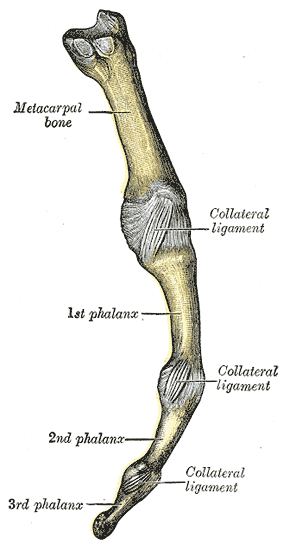
BONES OF HAND
The eight bones of the adult wrist are often described as cubical in shape with six surface.eachccarpal projections. the hook of the hamate and the pisiform underlie the medial edge of the palm at the base of metacarpal 5.
The scaphoid tubercle and trapzium crest underlie the laterla edge of the plam, at the base of the thumb metacarpal.
Carpel Tunnel : fibrous band stretched transversley between carpal elevation.
Proximal row incorporation ( from Radial to Ulnar) :
scaphoid-> articulate with radius
lunate-> // // //
triquetral
pisiform
Distal row of carplas (from Radius to Ulnar):
trapezium ( greater multangular)
trapezoid ( lesser multangular)
capitate
hamate
carpal bones each ossify from single center.
Many skeleton , especially those from archaeological sites, have incoplete hand because of the postmortem disturbance of the skeleton before excavation for exp, rodant
these animals often move smaller skeletal elements during their burrowing activities
seamoids, pisiform, terminal phalanges are often lose in excavation
confusion of carpale bone with tarsal bones.



